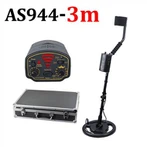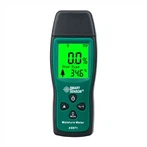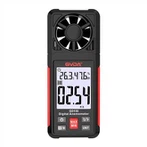The purpose of the electric test pen_How to use the electric test pen accurately
The electric test pen is one of the tools commonly used by electricians to distinguish whether an object is charged or not. Its internal structure is a light bulb with only two electrodes. The bulb is filled with neon gas, commonly known as a neon bulb. One pole of it is connected to the pen tip, and the other pole is connected in series with a high resistance to the other end of the pen. When the voltage between the north and south poles of the neon bulb reaches a certain value, there will be a glow between the south and north poles, and the intensity of the glow is proportional to the voltage between the south and north poles. When the voltage of the charged body to the ground is greater than the glow voltage at the beginning of the neon bulb, and the top of the test pen touches it, the other end is grounded through the human body, so the test pen will emit light. The function of the resistance in the test pencil is to bind the current flowing through the human body to avoid accidents.
In addition to being able to distinguish whether an object is charged or not, the electric test pen also has the following uses:
(1) It can be used for low-voltage phase verification to measure whether any wires in the line are in the same phase or out of phase. The specific method is: stand on an object insulated from the ground, hold a test lead in each hand, and then walk through the two wires to be tested for inspection. On the contrary, it is the same phase, which uses the principle that the voltage difference between the north and south poles of the neon bulb in the test pen is proportional to its luminous intensity to make a difference.
(2) It can be used to distinguish alternating current and direct current. When using the test pen for inspection, if both poles in the neon bulb of the test pen glow, it is alternating current; if only one of the two poles glows, it is direct current.
(3) Positive and negative poles that can differentiate direct current. Connect the test pen to the DC circuit for inspection. The bright pole of the neon bulb is the negative pole, and the non-lit pole is the positive pole.
(4) It can be used to distinguish whether the DC is grounded or not. In a ground-insulated DC system, you can stand on the ground and touch the positive or negative pole of the DC system with a test pen. If the neon bulb of the test pen does not light up, there is no grounding phenomenon. If the neon bulb lights up, it means that there is a grounding phenomenon, and if it lights up at the top of the pen, it means that the positive electrode is grounded. If the light is on the finger end, it is the negative ground. However, it must be pointed out that in a DC system with a grounding inspection relay, this method cannot be used to distinguish whether the DC system is grounded.
How to use the test pen accurately:
① Before checking whether the electrical appliances and lines are live, you should try it in a place with electricity to see if the test pen is intact, so as to prevent electric shock due to misalignment.
②When holding the pen, press and hold the tail of the test pen with your fingers, and hold the body of the pen with your other fingers.
③ When measuring electricity, the tip of the pen touches the test object, and the hand touches the tail of the test pen. If the test object is charged, the neon tube of the test pen will emit light; if the neon tube does not glow, it means that the test object is not charged.
④ The insulation resistance of the electric measuring pen is less than 1 megohm and cannot be used.





